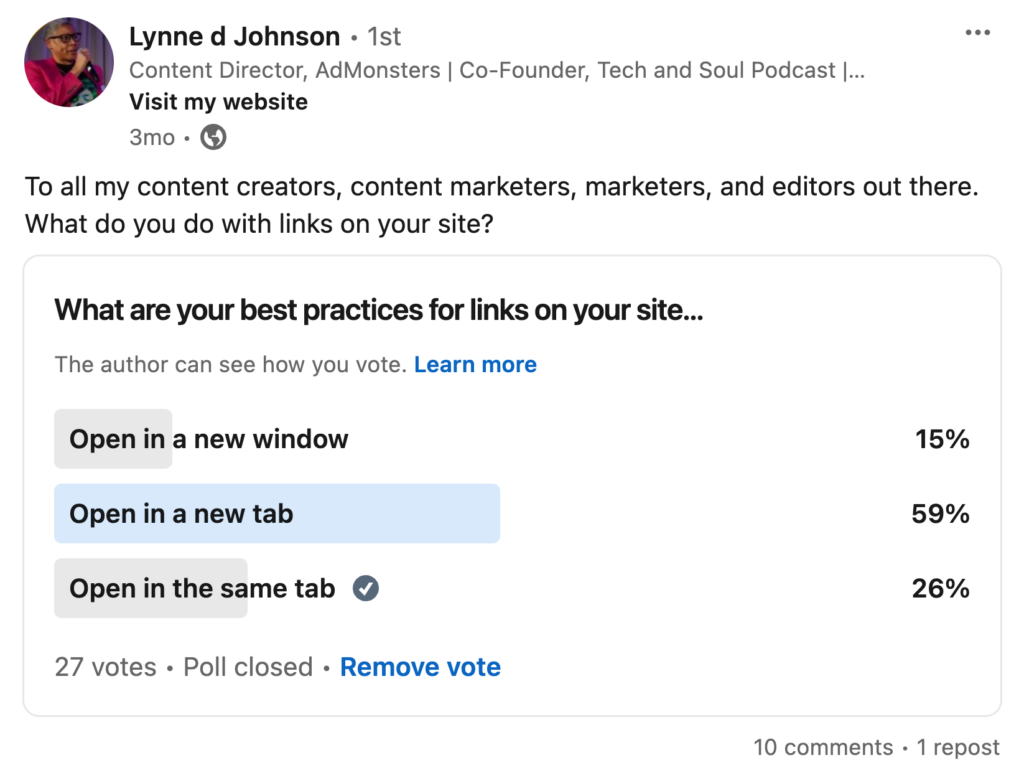Arguments for opening links in a new tab or window
Update: Please see my follow up article that clarifies what information I’m looking for.
A couple of months ago, Lynne d Johnson asked how content creators, marketers, and editors handle outbound links. The results of her LinkedIn poll and the comments on it surprised me.

My stance in the poll’s comments reflects advice I’ve long given to clients:
- New tabs disrupt the functionality of the back button, a critical browser feature.
- It complicates browsing on mobile by disabling the swipe-to-go-back gesture.
- It creates a bad experience for those utilizing assistive technologies.
- People should have control over when they want to open new tabs and when they don’t.
Despite the advice and a myriad of articles backing up these points, many still favor new tabs. So, this begs the question: Why?
Rationales I’ve encountered include:
- Ensuring users can easily return to the original site.
- Increasing time spent on the original site.
- Clearly differentiating between the original content and external resources.
Are there other arguments that I’m missing?
And more importantly, does anyone have data that supports the arguments for opening links in new tabs or windows?
I don’t remember the first time I was asked to open links in a new window, but I know it was early in my career. After nearly two decades of debating this practice, you’d expect to find a few case studies or academic papers supporting the approach. But I’ve searched extensively and I can’t even find any anecdotes that support this practice.
What am I missing? A significant percentage of web professionals believe that opening outbound links in new tabs or windows provides a benefit to site owners. Why? Is it a digital urban legend? Or are people sitting on internal data showing big benefits to this approach?
These are honest questions. I know the arguments against this approach, but what are the arguments and the data for it? If there are benefits that have been measured, I’d love to know about them.

Jason Grigsby is one of the co-founders of Cloud Four, Mobile Portland and Responsive Field Day. He is the author of Progressive Web Apps from A Book Apart. Follow him at @grigs.
